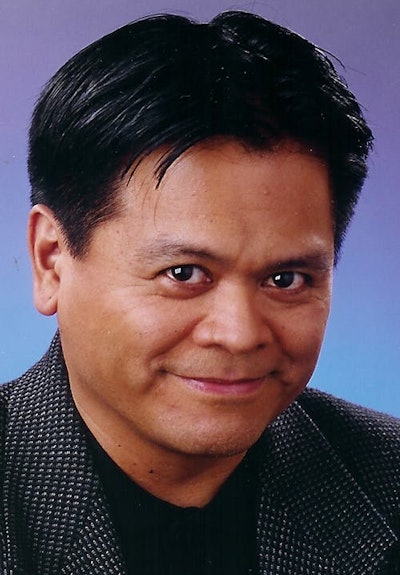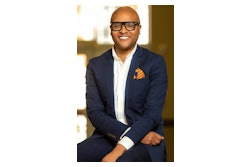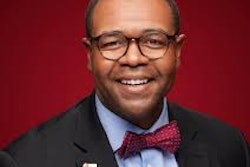The anxiety level is rising. Harvard’s class of 2027 will be told if it’s thumbs up or down on March 30.
The class based on Early Action admits is already 30 percent Asian American, could that number go even higher to indicate a loosening of a cap on Asian American admissions that may be borderline discriminatory?
As we wait to see, did you hear the one about the Filipino in The New Yorker? Magazine, that is.
I don’t mean Jia Tolentino on the weight loss drug Ozempic, but the assessment of one male Filipino American Harvard applicant, written on official Harvard admissions stationery.
Jose is said to be the son of a farmworker killed by a tractor, who now supports his family of 14 while working as a cancer researcher AND playing football as a 132-pound defensive lineman (incredible considering his slight build). But he played at such a high level that not only was he named California Class AAA Player of the Year, he’s had an offer from the Rams of the NFL.  Emil Guillermo
Emil Guillermo
And let’s not give too much credence to the Nobel Prize he’s won.
“After all, they gave one to Martin Luther King, too,” the admission’s assessment reads. “No doubt just another example of giving preference to minorities.”
Far from an instant admit as a young man bound for greatness, Jose is given the designation of being another “AA CJer.” Apparently, that’s code for an Asian American likely to go pre-med and become a doctor.
It’s obviously a stacked joke, one that’s funny in a gallows humor sort of way, and ready for use by either side of the affirmative action debate.
If you’re for it, it drips with the absurdity of the process.
If you’re against it, well, doesn’t this just ring with institutional racism!
But it’s a joke, essentially like an April Fools’ prank, written by an Asian American (Thomas Hibino) who at the time worked at the Department of Justice’s Office for Civil Rights. Hibino, now retired, became the regional director and had once worked at the Japanese American Citizens League. He wrote it in 2012 to jokingly goad his lunch buddy, William Fitzsimmons, the Dean of Admissions at Harvard.
And it was so good even Fitzsimmons appears to have been fooled by it.
That’s not exactly a smoking gun to sink affirmative action. If anything, it reveals maybe a much too chummy relationship between the regulator (Hibino) and the regulated (Harvard/Fitzsimmons).
Not to mention, it’s embarrassing to everyone.
And now it looks more like a decorative “final nail” in the Harvard affirmative action case now before the Supreme Court–as if one needs any more nails than six conservative justices.
I say that, and I’m generally in support of affirmative action.
“The Secret Joke At The Heart of the Harvard Affirmative-Action Case,” The New Yorker column by Harvard Law professor Jeannie Suk Gerson, is really a victory lap—for journalism.
The New Yorker and other media groups argued to get previously sealed information from the trial that began in 2018, including sidebar conversations, complete court transcripts, and memos made public.
The joke was one of them. And now that the Supreme Court has been handed all the sealed information, there was no real justification to keep any of it from the media now.
That’s not to say Judge Allison Burroughs, an Obama appointee, wasn’t right in trying to maintain a clear path to the relevant facts by keeping the joke among other items under wraps.
Her justification, according to the transcripts released to The New Yorker, was that she could summarize the key points rather than reveal all of the material. But that’s not really good enough, and the media pushed back.
As for what Burroughs called the “inappropriate, anti-Asian, stereotypical, poor attempt at a joke,” she was trying to give “a flavor of it without really being awful about it, I guess.”
Meaning, I presume, she wanted to keep things narrowly focused and didn’t want something sexy like an inappropriate joke from confusing the public on an issue that plays out like dry brush.
A bad joke is just the kind of thing that lights up another dull affirmative action story.
So now you know the joke, and it will be used for sure by the plaintiffs, Students for Fair Admissions, the group using Asian Americans as white proxies to end affirmative action.
It’s not relevant to the current case, but they sure could argue that it shows a mindset at Harvard that’s anti-Asian American.
But remember, it was written by Hibino, the Asian American at the Department of Justice’s Office of Civil Rights. And it may have actually fooled Harvard’s Dean of Admissions.
Judge Burroughs may have tried to protect the individuals from embarrassment or from creating a circus around the joke, but maybe Dean Fitzsimmons should have been asked about it in court.
Instead, the joke’s out, and now both Hibino and Fitzsimmons aren’t talking to the media.
THE DEATH KNELL? Since the SCOTUS hearing in October, it’s been easy to lay in wait for the decision that people say is likely to end the current form of affirmative action in college admissions.
The silence, or absence of anything, on the Harvard case has actually been comforting.
But with every new bit of information like the revelation of the Harvard Filipino joke this past week, it’s hard not to begin to hear the death knell loud and clear.
I was wondering about it as I finished up my theatrical projects in New York City this past weekend.
It struck me that in Ishmael Reed’s satirical “The Conductor,” one of the roles I play (besides a brown Tucker Carlson-type) is Ed Blum, the man spearheading the anti-affirmative action group suing Harvard.
My Blum part is just an off-stage voiceover, but one person in the audience, who spoke to Ed Blum recently, asked me, “Who’s the person who plays Ed Blum?” The person remarked how the pitch was spot on.
The person didn’t know it was me, a Filipino American Harvard graduate.
Which brings me to the other project that began my Lenten theater journey, “Emil Amok: Lost NPR Host Found Under St. Marks,” where I tell stories of my Filipino American experience in the white mainstream of media and Harvard, including the speech I gave to deliver the roast of Harvard as class wit.
I was not Jose, the son of a farm worker killed by a tractor. I was the son of Willie, the man who refused to go to the farms and stayed in San Francisco. “I am not here to pick the vegetables, but to cook the vegetables!” I declare as my father.
For the run, I invited several Harvard classmates from decades ago to attend my performances, and most all of them accepted. The doctors, the lawyers, the Academy Award nominee, the writers.
One of them (a doctor) said, “I know you more after 55 minutes of your show than I did in four years at Harvard.”
Another, a writer, said he was ashamed. That he wasn’t curious enough to get to know more about me and my circumstances when we were brought together by the admissions process into Harvard.
“I just assumed you were like me,” said the white, New York, Harvard legacy.
In an email my friend wrote: “I shouldn’t have been so solipsistic and blithely assuming. I should have been more sensitive and curious. That aside, it was incredibly moving and meaningful to be let in now and to have a better sense of who you are.”
It only took 45 or so years for the real magic of affirmative action to happen. But it happened, which is probably the best reason why affirmative action must continue for the good of our diverse society.
### NOTE: I will talk about this column and other matters on “Emil Amok’s Takeout,” my micro-talk show. Livestreamed on Facebook; my YouTube channel; and Twitter. Catch the recordings on www.amok.com.
Emil Guillermo is a former adjunct professor at colleges around the country, and a journalist, commentator, and stage performer.



















